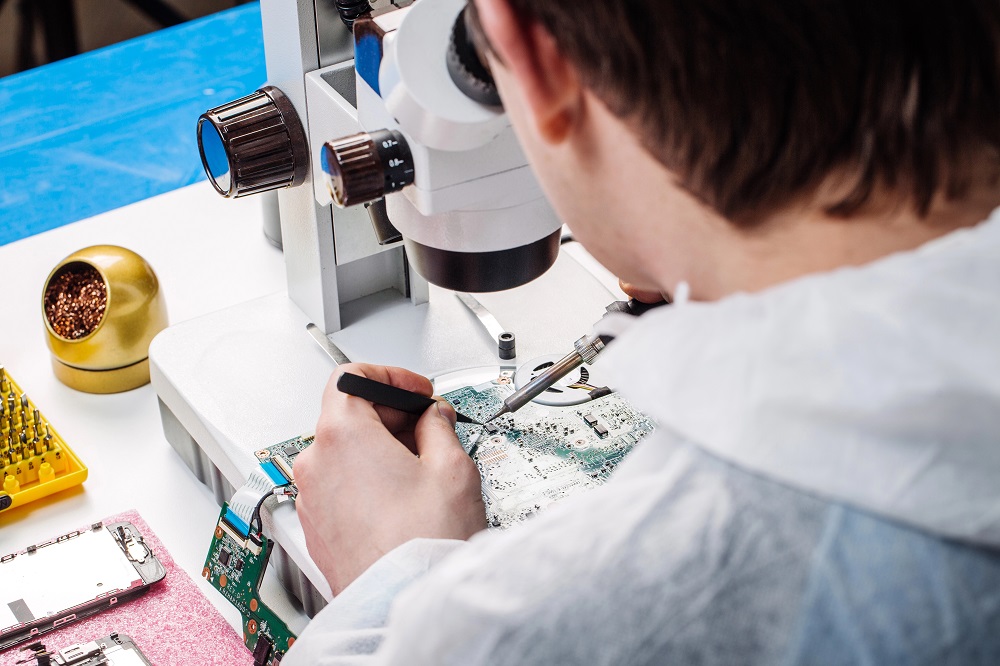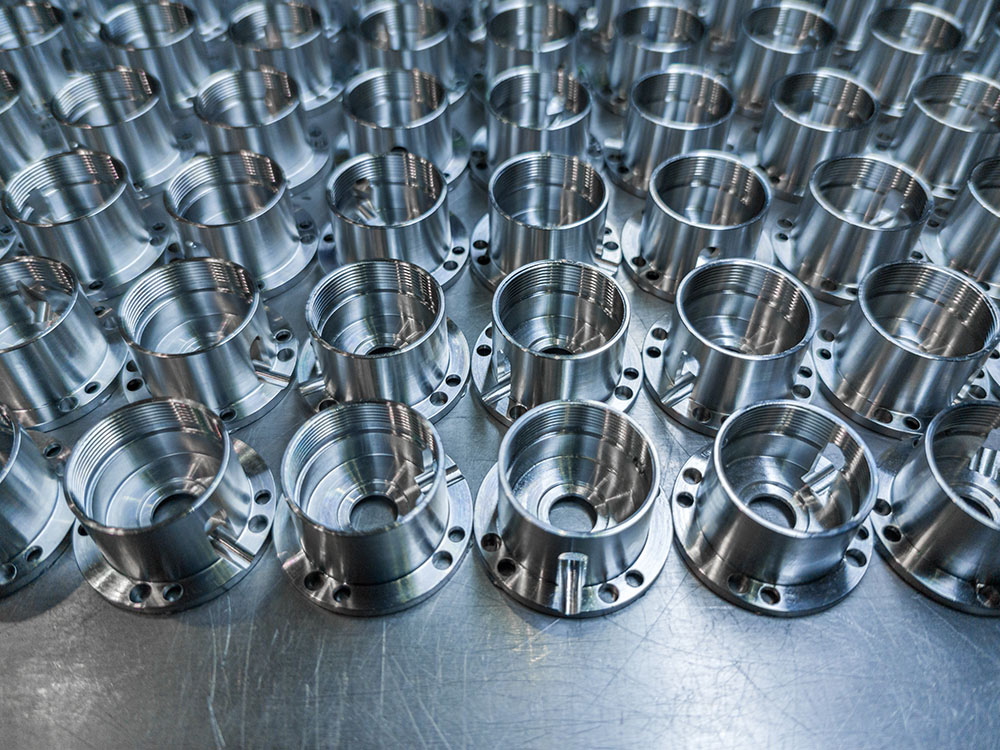Rapidly support your electronics and electrical appliance ideas from concept to market with our prototyping and manufacturing services
Electronics Prototyping and On Demand Manufacturing
Electronics
Rapid prototyping is critical in the electronics and electricals industry, where it can significantly accelerate a product from concept to market.Through advanced manufacturing methods such as 3D printing and CNC machining, companies are able to quickly create fully functional prototypes for design verification, functional testing and user feedback collection.This technology not only shortens product development cycles, but also reduces R&D costs, improves design quality, enables complex designs, and makes product iterations more flexible and efficient.In addition, rapid prototyping supports multi-material manufacturing, allowing the material properties of a product to be evaluated at an early stage, thus driving innovation and product personalization.Through rapid prototyping, electronics and electricals companies are able to respond faster to market changes and improve the market competitiveness of their products, bringing great value to the electronics and electricals industry.
Why Cooperate with Brightstar for Electronic Prototyping?
Together with innovators from all walks of life to create a better world of the future, Brightstar Prototype has been dedicated to professional prototyping for 17 years, and has created countless prototypes for the electronics and electrical industry, ranging from circuit boards and microcontrollers to Electronic and electrical shells. Brightstar's advanced machining equipment and state-of-the-art manufacturing technological capabilities are designed to live up to the expectations of each and every customer, and to satisfy each and every detail of the customer's requirements for product prototyping.

Brightstar's Manufacturing Capability
Brightstar's rapid electronics prototyping services allow customers in the electronics and electricals industry to validate design concepts at an early stage, conduct functional tests and performance evaluations, thereby identifying and resolving potential issues prior to large-scale production and rapid iterative time-to-market.Brightstar Rapid Prototyping is capable of handling more than 100+ types of manufacturable materials, metallic and non-metallic, which provides a wide range of material choices for product development in electronics and electrical industries, and specializes in a variety of Rapid Prototyping technologies, including CNC high-precision machining, 3D Rapid Printing Rapid Prototyping, Sheet Metal, Vacuum Pouring, Rapid Tooling, and Rapid Plastic Injection Molding, and supports small batch production, meanwhile, Haoshin also provides 60+ types of surface treatment services, such as anodizing, sandblasting, painting, plating... etc. to meet the demands of electronics and electrical products for appearance and functionality. Brightstar Rapid Prototyping follows strict quality certification and ISO 9001 standards to ensure that the processed prototypes and products meet the quality requirements of the electronics and electrical industry.

CNC machining:
Brightstar utilizes advanced 3- and 5-axis machines for precision CNC machining and can manufacture parts in over 100 metal materials.This type of machining is ideal for the manufacturing needs of complex shapes and precision tolerances, and is particularly suited to the manufacture of components in the electronics and electricals industry that require extremely high precision requirements.
3D printing (additive manufacturing):
3D printing technology offers extreme design flexibility and the ability to rapidly manufacture complex geometries suitable for prototyping and small batch production.In the electronics and electricals industry, 3D printing can be used for rapid prototyping, manufacturing of complex structures, and production of customized parts.The rapid printing services such as SLM and SLS provided by Brightstar, together with a wide range of material choices and perfect surface treatment services, can reliably deliver the parts required by customers within a few days.

Sheet metal fabrication:
Sheet metal fabrication involves the process of manufacturing parts using sheet metal material, including steps such as cutting, bending, and welding.This method is suitable for manufacturing metal parts that require a certain strength and shape, such as steel fabrication. In the electronics and electricals industry, sheet metal fabrication is commonly used to produce housings, brackets, structural components, etc. for electronic products.The 3D visualization of Design for Manufacturability (DFM) feedback and manufacturing recommendations provided by Brightstar helps to improve the efficiency and quality of sheet metal manufacturing.
Vacuum casting:
The vacuum casting process uses silicone molds to produce polyurethane castings for rapid prototyping and low volume production. In the electronics and electrical industry, vacuum casting can be used to manufacture some lightweight, complex parts, such as housing and structural parts. Brightstar's ability to deliver globally in small quantities in 10 days or less is very helpful in responding quickly to market changes and product iterations.
Rapid tooling and injection molding:
With many years of experience in rapid tooling in aluminum and steel, as well as plastic injection molding, Brightstar can provide cost-effective tooling and accelerated manufacturing cycles. Injection molding is widely used in the electronics and electrical industry, such as the production of plastic housings and components. Brightstar offers approximately 200 different thermoplastic resins and a wide range of manufacturing solutions, as well as engineering advice, to meet the diverse needs of injection molded parts in the electronics and electricals industry.
The clients we serve in the electronics and electricals industry
Consumer electronics manufacturer: such as smartphones, computers, household appliances, etc.
Home appliance manufacturers: household appliances such as refrigerators, washing machines, air conditioners, etc.
Basic electronics industry company: manufacturing of electronic components, electronic specialized equipment, electronic measuring instruments, etc.
New energy technology companies
Network equipment manufacturer
OEM design studio
Telecommunications
Semiconductor design and manufacturing company
LED manufacturing company
What Our Customers Say
Quick quote for your electronic and electrical components, upload your CAD file now!
Rapid Prototyping in Several Key Stages of Electronics Product Development to production
Conceptual design phase:
Rapid prototyping allows designers to quickly transform design concepts from drawings to physical models so they can visually assess the appearance and functionality of their designs. Designers and engineers can review prototypes, checking the proportions and details of the designs to ensure they meet the desired aesthetic and engineering requirements.

Functional testing phase:
With rapid prototyping, functional components of electronics and electrical products, such as circuit boards, sensors or user interfaces, can be rapidly manufactured to verify their performance and reliability.
Electrical performance tests, including circuit stability, power consumption and signal integrity, are conducted to ensure that components function properly under expected operating conditions.
It can simulate the actual use environment and conduct environmental adaptability tests, such as temperature, humidity and vibration tests, to evaluate the performance and durability of the products in different environments.
For equipment that contains complex electronic systems, system integration testing can be performed to ensure that the components work together to meet design requirements.
Detailed design and optimization phase:
Electronics prototyping enables designers and engineers to make iterative improvements to a specific part or system, optimizing the design to meet performance goals.Modified parts can be quickly manufactured for real-world testing to verify the effectiveness of the improvements.

Pre-production test phase (small batch production):
Prior to mass production, rapid prototyping can be used to create a small number of pre-production samples that will undergo a series of tests and evaluations to ensure the quality of the final product.
Exhaustive electrical and functional testing is performed to ensure that the circuits, components and systems of pre-production samples are stable under a wide range of conditions.
The user experience and product ergonomics are verified through real-world use tests to ensure the convenience and comfort of the product in real-world applications.
Life and durability tests are conducted to simulate the performance of products under long-term operating conditions in order to predict their service life and reliability.
Complete compliance testing to ensure that all pre-production samples meet industry standards and regulatory requirements, including electromagnetic compatibility (EMC) testing and electrical safety testing. Ensure design manufacturability is verified prior to fabrication of production tooling and mass production..
The Widespread Application of Brightstar Prototyping in the Electronics Industry
Rapid prototyping is widely used in the electronics industry to quickly turn design concepts into physical prototypes. It enables early functional testing, performance validation, and user feedback collection, speeding up product development and ensuring quality before mass production. Brightstar offers comprehensive rapid prototyping services, including custom solutions for circuits and microelectronics, structural prototypes, system integration, and functional testing.








